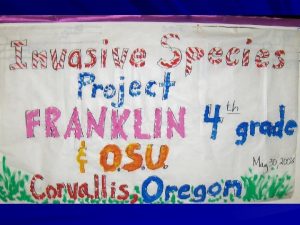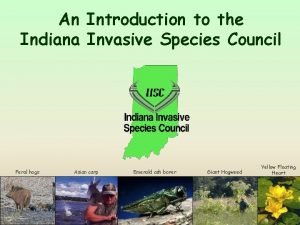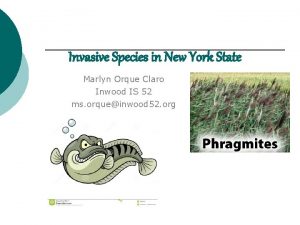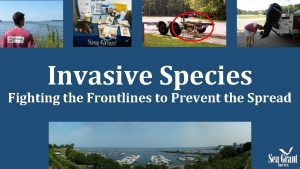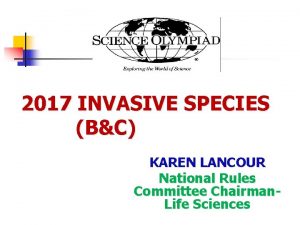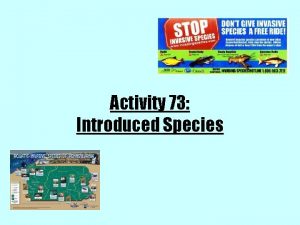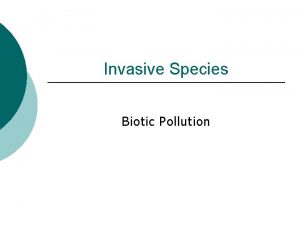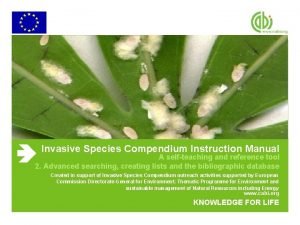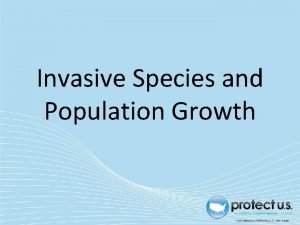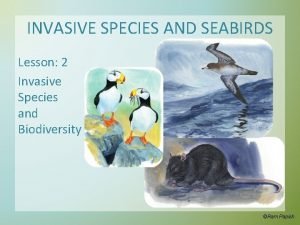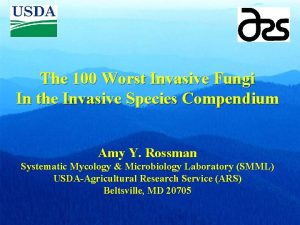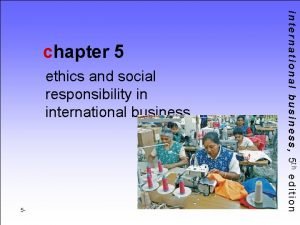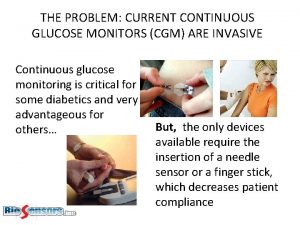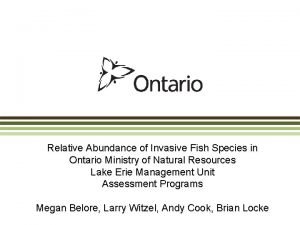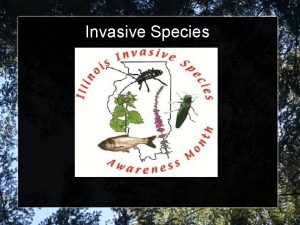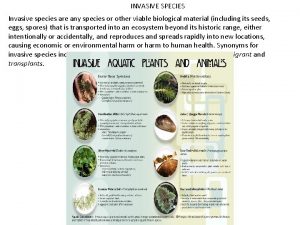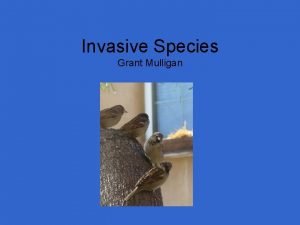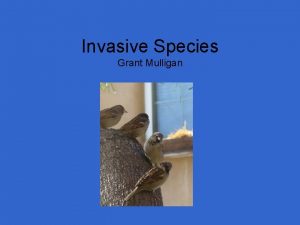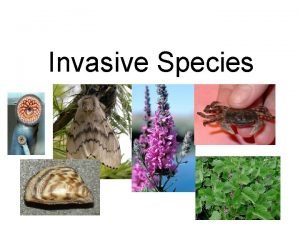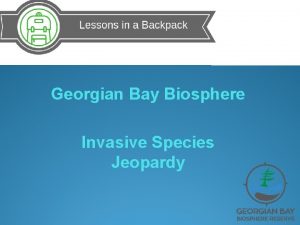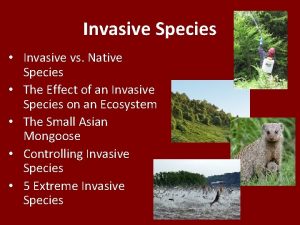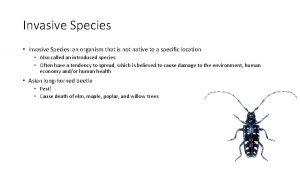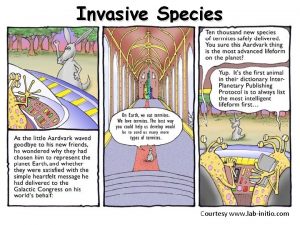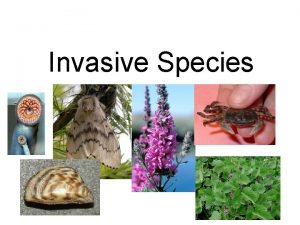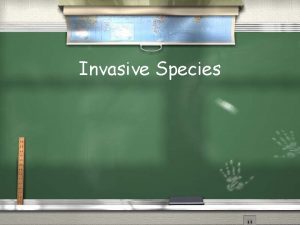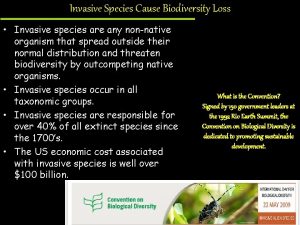Florida Invasive Species Partnership Managing Invasive Species Across


















- Slides: 18

Florida Invasive Species Partnership: Managing Invasive Species Across Boundaries in Florida Kristina Serbesoff-King Invasive Species Program Manager Florida Chapter, The Nature Conservancy -on behalf of Florida Invasive Species Partnership (FISP)

Becoming F. I. S. P. Invasive Species Working Group • 2001 Invasive Species Working Group – Represent state agencies and other cooperators – Create one strategic plan for prevention and management of all biological invasions in Florida • 2005 Private Land Incentive Sub-working Group – Create partnership between public land managers, resource managers and private land managers – Assume no “one size fits all” approach will work • 2008 The Florida Invasive Species Partnership – Maintain same partnership focus

FISP’s Mission - Public/Private Partnership Is the Only Way 60% of Florida is privately owned Publicly managed areas Improve the efficiency and effectiveness of partnership approaches to preventing and controlling invasives species through increased communication, coordination and shared resources in order to protect wildlife habitat, working lands, natural communities and biodiversity in Florida.

Challenges • Public land managers – Limited funds – Limited staff or authority to “cross the fenceline” – Limited ability to assist their neighbors with invasive species control • Private land incentives administrators – Provide information about the programs they administer – Unaware of other options that might be advantageous to the landowner • Private landowners – Not receiving all the available information – Lose interest

FISP mutual agreement Partners of FISP recognize that if landowners and land managers in Florida wish to achieve long-term success with regards to reducing the threat of invasive, non-native species, it is critical to: – Reach out and collaborate with all stakeholders, including private landowners. – Focus on holistic management of invasive species, which includes prevention, early detection/rapid response, control and applied research.

FISP Goals Think Locally - Act Neighborly 1. Increase effectiveness and decrease costs by working together. 2. Provide tools to develop a unified approach and bridge the gap between landowners’ and land management agency efforts. 3. Encourage development, implementation and sharing of new and innovative approaches.

FISP Objectives • Develop and maintain a matrix of existing incentive programs that can be used for invasive species management on public and private lands. • Establish and maintain an interactive website at www. floridainvasives. org that will host the incentive matrix; provide links to specific information to address and resolve problems in regards to invasive species and serve as a central clearinghouse for invasive species partnership efforts. • Promote and participate in partnerships and collaborative efforts to address invasive species on statewide, regional and local levels (i. e. , Cooperative Invasive Species Management Areas (CISMAs). • Provide targeted outreach and training to foster innovative approaches to invasive species management in Florida.

FISP Accomplishments • FISP represented at over 25 meetings/conferences within Florida and Nationally since 2008 – Receiving increased interest from other agencies such as National Park Service, US Forest Service, Florida Natural Areas Inventory and others, asking: What can we do? • Hired FISP database and outreach coordinator – Updates and manages Incentive Program Matrix • FISP articles written for multiple publications – Wildland Weeds, Conservation Forestry Handbook, Forest Stewardship Newsletter • Developed Florida. Invasives. org – hosts the Matrix • Continuing to foster the development of CISMAs and hosting monthly online meetings for CISMAs

The website

The “Matrix”

Fields available in Matrix Includes federal programs – w/specific information on Florida

Includes non-profit programs Goal to update quarterly so you contact the right person the 1 st time!

FISP Accomplishments • FDOT Voluntary Codes of Conduct – Increased statewide awareness and understanding of invasive plants at all levels within DOT • Training on invasive plant identification for employees, consultants and contractors • Phase out use of FLEPPC Category I and II plants • Encourage plant nurseries to increase availability of noninvasive plants – DOT Participates in FISP and CISMAs • FWC Invasive Plant Management Section (IPMS) provided plant ID decks to FDOT and county DOT (as part of DACS Cogongrass Initiative) • FWC IPMS supporting FNAI mapping of DOT borrow pits (July 2009)

FISP Developments • CISMA websites • Resolution between all FISP partners • Informational Posters • “In Service” Trainings • FWC-IPMS responding to CISMA requests: – Decontamination Protocol for Pesticide Applicators in Florida – Procedures for spraying near organic farms – Homeowner disposal of invasive plants

CISMAs Crossing Boundaries, Meeting Challenges Cooperative Invasive Spp. Management Areas a partnership of federal, state, and local government agencies, tribes, individuals and various interested groups that manage invasive species in a defined area Everglades CISMA – Joint Work Day

Cropping Up in Florida 2007 -2009

Creating Websites for CISMAs in Florida Timeline: • CISMAs to have website content info submitted end of March 09 • CISMA websites up by June 09 • “How to Create a CISMA Website” guide completed end of 2009 w/downloadable template

Invasive Species know NO boundaries – Do we? Necessary ingredients for long-term success: • Multiple agencies and organizations in partnership • Involve private landowners and interests • Recognize differences and commonalities in missions • Conservation leverage Key ISTF – Python patrol training COOPERATION is the key to successful, long-term management of invasive species!
 Are invasive species always bad
Are invasive species always bad Indiana invasive species council
Indiana invasive species council Invasive species investigator worksheet
Invasive species investigator worksheet Invasive species characteristics
Invasive species characteristics Invasive species act ontario
Invasive species act ontario Invasive species laws
Invasive species laws Invasive species investigator worksheet
Invasive species investigator worksheet Invasive species characteristics
Invasive species characteristics Invasive species compendium
Invasive species compendium Invasive species growth curve
Invasive species growth curve Invasive species characteristics
Invasive species characteristics Invasive mushroom species
Invasive mushroom species Exotic species meaning
Exotic species meaning Obstructionist stance
Obstructionist stance Can plants be keystone species
Can plants be keystone species Invasive beatmung über tracheostoma
Invasive beatmung über tracheostoma Doc for invasive aspergillosis
Doc for invasive aspergillosis Non invasive cgm
Non invasive cgm Ontario invasive fish
Ontario invasive fish
